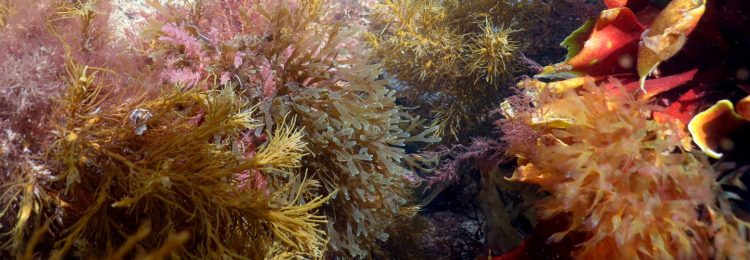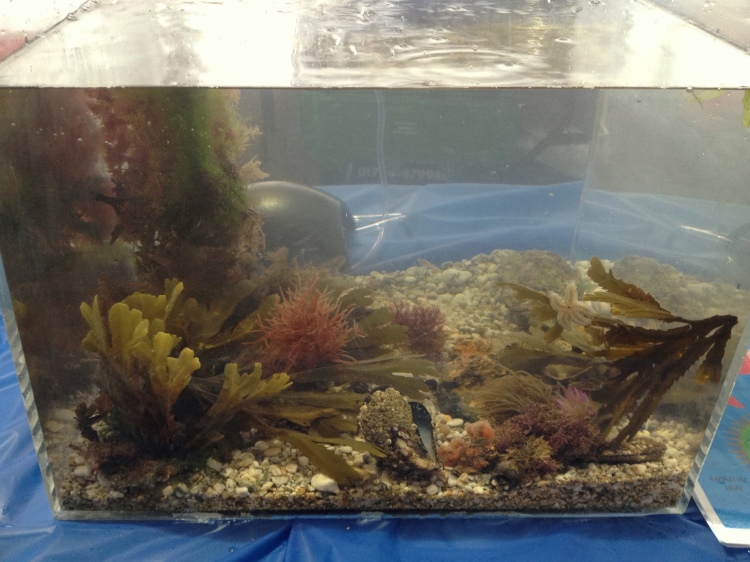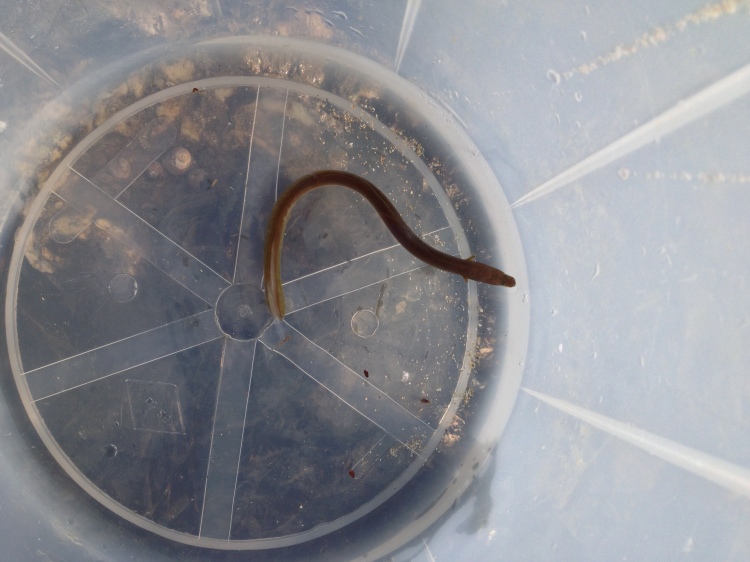 I had a few rock pooling sessions recently to play with my new camera (and wide angle lens). The main one was a workshop with North coast-based Thomas Daguerre of Hydro Motion Media (facebook). I am just a beginning photographer and so learning the ropes from an experienced hand proved immensely valuable. The session started with going through some of the basics (white balance, focusing etc), after which we headed out to the rock pools to put some of the theory in practice. We headed down to Thomas’ stomping ground of south Fistral Beach (I visited once before). Although the timing was not the best tide-wise, it was a beautiful day. This was the first time I actually submerged myself in rock pools to take photo’s; of course, being able to look through your view finder is the only way to do it right. It is hard to not stir up sediment though and in some pools salinity gradients made for bad viz. I used Thomas’ G16 setup with video lights and a strobe on a tray (something like this; should have taken a picture of it) which was very difficult! As a result of all the experimentation I ended up with few blog-worthy photos, but this session made clear that trying to capture ‘rock pool scapes’ is what I would like to focus on, the variety of seaweed species, colours and shapes I find especially cool.
I had a few rock pooling sessions recently to play with my new camera (and wide angle lens). The main one was a workshop with North coast-based Thomas Daguerre of Hydro Motion Media (facebook). I am just a beginning photographer and so learning the ropes from an experienced hand proved immensely valuable. The session started with going through some of the basics (white balance, focusing etc), after which we headed out to the rock pools to put some of the theory in practice. We headed down to Thomas’ stomping ground of south Fistral Beach (I visited once before). Although the timing was not the best tide-wise, it was a beautiful day. This was the first time I actually submerged myself in rock pools to take photo’s; of course, being able to look through your view finder is the only way to do it right. It is hard to not stir up sediment though and in some pools salinity gradients made for bad viz. I used Thomas’ G16 setup with video lights and a strobe on a tray (something like this; should have taken a picture of it) which was very difficult! As a result of all the experimentation I ended up with few blog-worthy photos, but this session made clear that trying to capture ‘rock pool scapes’ is what I would like to focus on, the variety of seaweed species, colours and shapes I find especially cool.
 I really need to try to go back to these pools and try to get better photo’s. I also will arrange a second session with Thomas later in the season to start learning how to post-process RAW files. What was very interesting to see is that the pools here teem with Giant gobies Gobius cobitis, a protected species in the UK. We saw two lying side by side in a crevice but they are shy and it was hard to get a good shot. Thomas has recently made an excellent series of short films highlighting various charismatic local marine species, and one of them features the Giant goby (see the Hydro Motion Media site for the other eleven films):
I really need to try to go back to these pools and try to get better photo’s. I also will arrange a second session with Thomas later in the season to start learning how to post-process RAW files. What was very interesting to see is that the pools here teem with Giant gobies Gobius cobitis, a protected species in the UK. We saw two lying side by side in a crevice but they are shy and it was hard to get a good shot. Thomas has recently made an excellent series of short films highlighting various charismatic local marine species, and one of them features the Giant goby (see the Hydro Motion Media site for the other eleven films):







